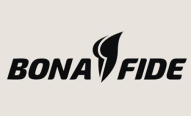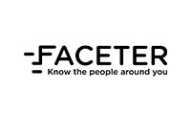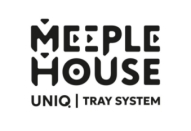Stablecoins and their regulation across different countries
Stablecoins are cryptocurrencies whose value is pegged to a specific asset, such as fiat currencies or precious metals. They are commonly used as a hedge against the volatility of the cryptocurrency market and can function as digital assets widely accepted in financial and trading transactions. The regulation of stablecoins largely depends on the jurisdiction, and regulatory approaches can vary significantly from country to country. Let’s explore several key examples of stablecoin regulation in various nations.
European Union (EU)
In the EU, stablecoin regulation is governed by the Markets in Crypto-Assets Regulation (MiCA). More information about our services within the MiCA framework can be found here. This regulation establishes unified rules for cryptocurrencies, including stablecoins. MiCA divides stablecoins into two categories:
- Asset-referenced tokens (ARTs) – Tokens whose value is linked to a basket of assets such as fiat currencies, precious metals, or other crypto assets.
- E-money tokens (EMTs) – Tokens backed by a single fiat currency, similar to electronic money. Further details can be found via the link.
The primary requirements for stablecoin issuers in the EU include:
- Mandatory registration and licensing for issuers of ARTs and EMTs.
- Issuers must maintain fully backed reserves, which should be stored in secure financial institutions.
- Transparency and regular audits of the reserves are required.
- Interest payments on EMTs are prohibited to avoid competition with bank deposits.
- Issuers must ensure that tokens can be redeemed for fiat currency.
For systemically important stablecoins that are widely used in payments, additional capital and risk management requirements may be applied.
United Kingdom (UK)
The UK is actively developing a regulatory framework for stablecoins to ensure their safe use in the financial system. The regulation includes:
- The Financial Conduct Authority (FCA), which oversees the registration and licensing of stablecoin issuers and ensures compliance with standards, including consumer protection.
- The Bank of England, which regulates systemically important stablecoins and establishes reserve standards.
The UK requires stablecoin issuers to provide transparent information about their reserve mechanisms and financial stability, along with developing effective anti-money laundering (AML) and counter-terrorism financing (CFT) procedures.
Singapore
In Singapore, stablecoin regulation is overseen by the Monetary Authority of Singapore (MAS). The key requirements for issuers are as follows:
- Stablecoin reserves must be held in low-risk, highly liquid assets.
- Issuers are required to ensure that stablecoins can be redeemed at their nominal value.
- Disclosure requirements include providing the results of reserve audits.
MAS regulates only single-currency stablecoins pegged to the Singapore dollar or currencies of G10 countries, and it requires cryptocurrency exchange operators to obtain a license to legally operate.
United Arab Emirates (UAE)
The UAE actively regulates the stablecoin market through the Central Bank and the Securities and Commodities Authority (SCA). The primary regulations include:
- Licensing of stablecoin issuers by the Central Bank of the UAE.
- Requirements for reserve backing and transparency in reporting.
- Regulation at the Abu Dhabi level, where the Abu Dhabi Global Market (ADGM) operates under the Financial Services Regulatory Authority (FSRA), which has already approved the use of stablecoins like USDT.
The UAE aims to create a transparent and secure environment for stablecoin use that aligns with international standards.
El Salvador
El Salvador is actively integrating cryptocurrencies into its economy. In 2021, it passed the Bitcoin Law, which recognized Bitcoin as legal tender, and in 2023, it introduced the Digital Assets Issuance Law, which regulates the issuance of stablecoins. Key aspects include:
- The requirement for stablecoin issuers to obtain licenses from the National Digital Assets Commission (CNAD).
- Tax incentives for crypto investors and businesses.
El Salvador is fostering the development of the stablecoin market by creating conditions for their safe use amidst economic instability and inflation.
Argentina
In Argentina, stablecoin regulation became clearer in 2024 with the adoption of Law No. 27.739, which mandates the registration of stablecoin issuers with the National Securities Commission (CNV). Key points include:
- Simplified tax obligations for stablecoins, treating them as traditional assets.
- Restrictions imposed by the Central Bank on cryptocurrency transactions, though growing interest in stablecoins is tied to high inflation in the country.
Argentina offers opportunities for issuers by providing transparent business conditions and attractive tax incentives.
Stablecoin regulation in the United States (US)
In the United States, stablecoin regulation is still in development, and there is no unified federal law addressing all aspects of their use. However, various regulatory bodies, such as the Securities and Exchange Commission (SEC), the Commodity Futures Trading Commission (CFTC), and the Federal Reserve, have begun to craft approaches to regulate stablecoins to ensure financial market security and investor protection.
Stablecoin regulation in offshore jurisdictions
Offshore jurisdictions such as the Seychelles, Cayman Islands, British Virgin Islands, and others have become popular locations for registering cryptocurrency companies, including those issuing stablecoins. This is due to more lenient or even absent regulatory frameworks, allowing companies greater freedom in developing and launching new tokens.
Advantages of offshore jurisdictions
Offshore zones offer several benefits for stablecoin issuers:
- Minimal or no regulation: These jurisdictions often lack stringent reserve requirements or stablecoin registration rules, enabling faster market entry.
- Flexibility and low taxes: Many cryptocurrency startups find offshore zones appealing due to low tax rates and flexibility in establishing business processes.
- Privacy: Many offshore jurisdictions provide high levels of privacy for company owners, attracting those seeking minimal regulatory intervention.
Conclusion
Choosing the optimal jurisdiction for issuing stablecoins is a critical step that requires thorough analysis of the regulatory environment and potential risks. Given the varying approaches across different countries, it is essential to evaluate not only tax and legal aspects but also the long-term prospects amid evolving legislation.
Our team of legal experts is ready to assist you in selecting the appropriate jurisdiction and providing legal support throughout the process. We offer a comprehensive approach to minimize risks and ensure compliance with all regulatory requirements.
Contact us – we’ll help you make the right decision for your business.




























































